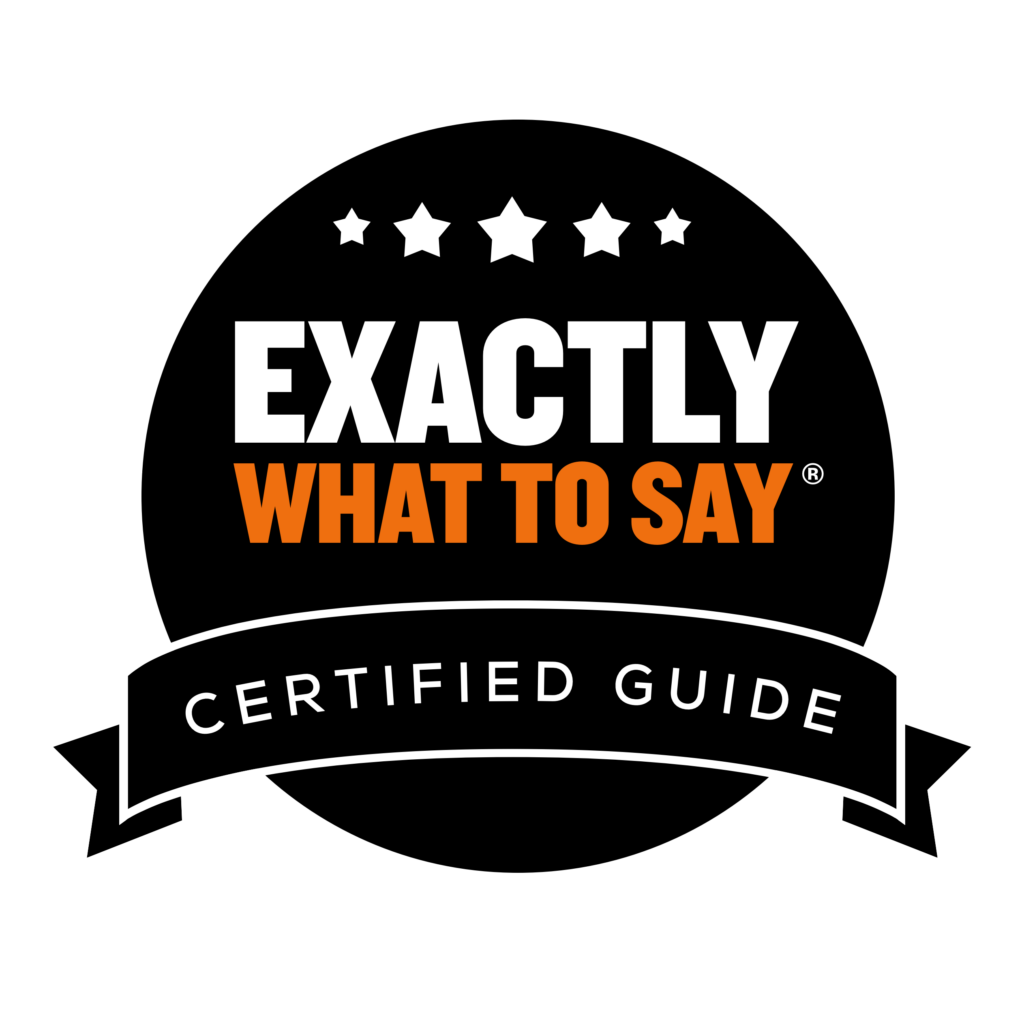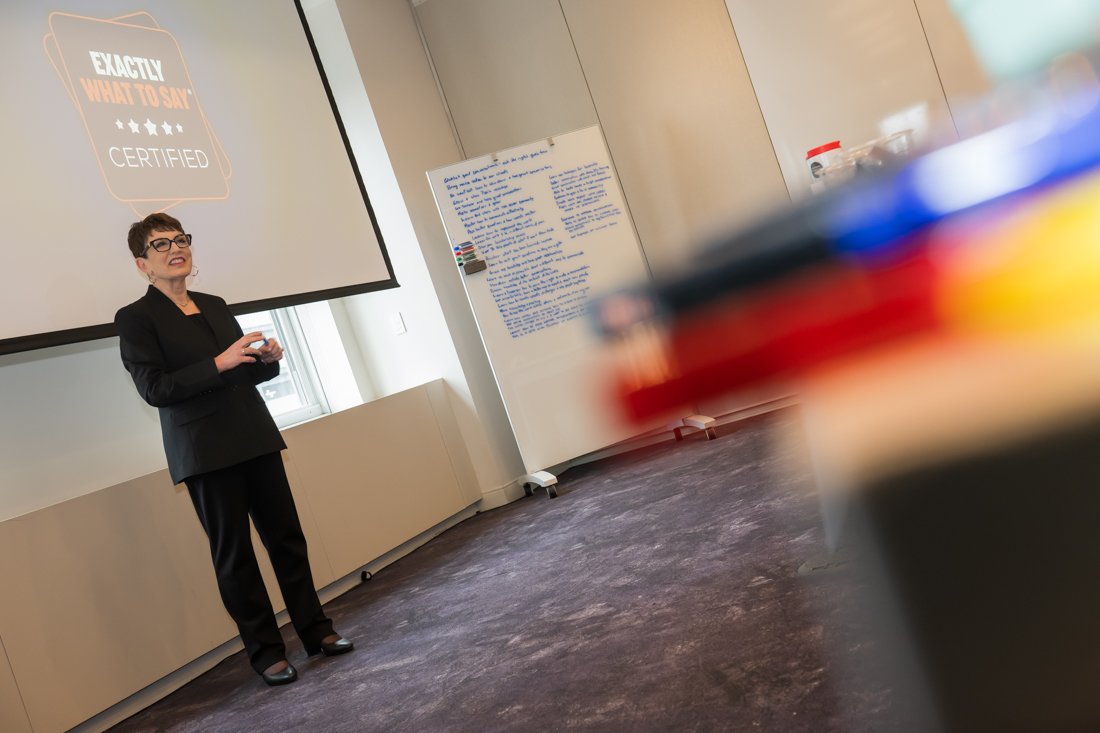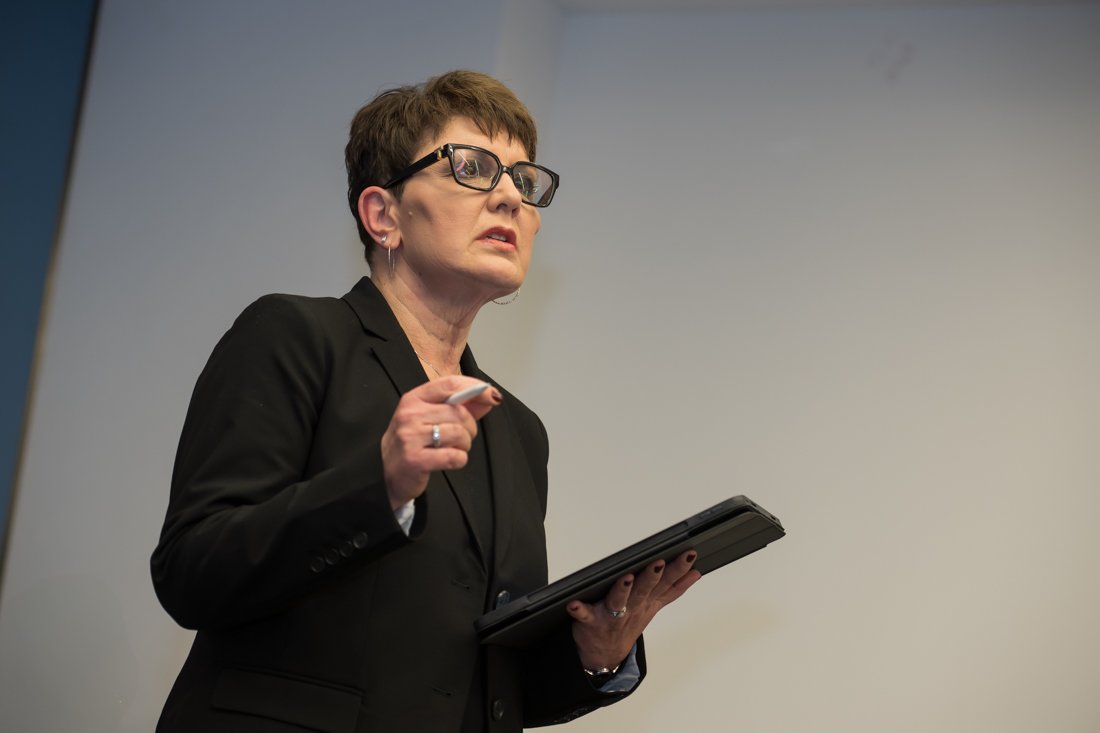Have you ever wanted to improve your email connections? With email being such an important method of communication, it’s essential that you get it just right.
EWTS Certified Guide, Teri Quimby, hosted one of the EWTS Critical Conversations workshops discussing just this, covering how to effectively communicate through your emails.
Could it be possible that with the right approach, you could craft better and more persuasive emails?
This blog will examine the illusion of communication, how you can provide your readers with a better experience, and identify techniques that you could use to be more persuasive and create more curiosity.
The Illusion Of Communication
The single biggest problem in communication is the illusion that it has taken place.
Have you ever ordered something and assumed that it would be a certain way, only to find that the reality of the product was completely different?
This happens after an illusion of communication takes place – you clearly saw and anticipated it being one thing but that is not what was delivered.
The same thing goes for your emails.
Are you hoping, thinking, and expecting that the communication has occurred, or is it actually occurring?
So often, you want the readers of your emails to take some kind of action, so you sit and type, creating a mind dump of information, and then hit send.
But what has actually happened here is that you have shifted the burden of responsibility to the recipient.
Remember, just because someone opens your email doesn’t mean that they have read it.
Effort Gets Results
Effort always gets results. No matter what the situation is, if you put thought and time into it, the results will always be far superior.
Ask yourself, what do you want to do with your emails? If you aim to increase the open-read and response rates, then you should make sure you are getting to the point quickly and concisely.
Are you making a point with your emails?
If you want to engage readers and convince somebody to do what you want with your emails, then the words you choose will go a long way toward achieving that.
Teri has spent her whole life playing with language as a writer, so she knows that you can achieve a lot with a few Simple Swaps of words in your emails.
Playing with words, moving them around, and creating Simple Swaps can be fun. Imagine if you made a little effort to choose the right words – would that make your emails more persuasive?
Would you be more effective at getting right to the point and generating better responses?
The Buc-ee’s Effect
Did you know that South West Airlines wrote their business plan on the back of a cocktail napkin? Sometimes, less is more, so long as the information is effective and concise.
When constructing your emails, ask yourself:
-
How much information do you need to give somebody to get them to open, read, and respond?
-
What do you need to say to deliver the best customer service experience?
- Are you giving them the communication and experience needed to initiate action?
Recently, Teri got to experience a new Buc-ee’s gas station when visiting Severevill, Tennessee. After disregarding it at first as ‘just another gas station’, she found that it was impossible to ignore the buzz that surrounded it.
It turns out this newly opened Buc-ee’s was the largest one in the country, and everyone kept telling her that it was ‘so much more than a gas station.’
What she discovered about this brand was that their approach to customer service could teach you a lot about the emails that you could send.
They created a healthy amount of curiosity for their customers – just with the branded merchandise that hits you as soon as you walk in – everything has the iconic beaver logo on it, from BBQ grills to beach umbrellas.
And even though it’s a really busy store, there are organizational signs everywhere pointing you to the many different departments, such as housewares, toys, clothing, the beef brisket wall, the bakery… you could very quickly and easily figure out where you were going.
People moved quickly through the place, and even though it was busy, there weren’t any lines. The staff focused on efficient customer service.
What could you learn from Buc-ee’s?
When you send your emails, do you create intrigue and curiosity with your subject lines?
Are you giving your readers organizational signs so they know what to do with your email content?
How are you delivering the customer service experience in your emails?
There Are Two Types Of People
To ensure that you are delivering the best experience from your emails, you should first understand who you are sending them to.
There are two types of email senders: the time savers and the time siphons.
The time-savers provide the information needed in a way that is easy and desirable to receive.
Whereas the time-siphons tend to send the ones you really don’t want to open – the ‘I’ll get to that later’ email.
What kind of email sender do you want to be?
To get it right ask yourself, are you giving them good organization? Are you using good word choices?
Are you really getting people where they need to go?
Don’t make the mistake of merely creating the illusion of communication from the subject lines to the signature line.
The Sent Email Challenge
One way to find out what kind of email sender you are is to take a look in your sent folders. Do you have anything that looks like this:
I just wanted to check in…
I am following up on…
I was wondering….
These types of emails are all too easily sent, but they are more about you than the recipient. When you go from the ‘I’ perspective, you’re not being as persuasive as you could be.
What’s in it for you if you’re the reader of this email?
Ask yourself, is your subject line persuasive? Are you making the point as succinctly as you can?
‘So What’ Subject Lines
Successful email communication starts with your subject line. How effective are they?
With a couple of simple word swaps and some organizational positioning of these words, you can be more persuasive, especially when it comes to your subject lines.
If you want to create intrigue and curiosity, how can you do this with your subject line? What would make you open it?
Teri recommends applying the ‘so what’ test. You might want to say it, but it doesn’t mean the reader needs to hear it.
So, if the reader doesn’t need to hear, take it out and make sure that you are getting straight to the point.
Fonts & Styles
Keep in mind, too, that people learn in different ways, and you can use this to your advantage. You have visual learners, logical learners, people who like words, and people who like colors.
Content, context, and word choices create effective communication, which increases persuasiveness. Think about your font style and size, the use of bold, italics, and lettering.
If you’re using certain things, ask yourself why you are using them. Does it add to the experience or hinder it?
Give Them Something They Can’t Say No To…
One of the hardest parts of any conversation is getting it started and developing word sequences that will reduce friction and allow you to dance yourself into more critical conversations.
Subject line choices alone can shut the conversation down. If somebody doesn’t open that email, they’ll never be able to connect with you.
What if you thought of something fun to say? Would this help you create a rejection-free opening?
The Exactly What to Say Four Cornerstones of Conversational Excellence could help you with this:
1
The worst time to think about the thing you’re saying is in the moment you’re saying it.
2
Curiosity is the fuel for great conversations.
3
The person asking the questions controls the conversation
4
People do things for their own reasons, not yours
Effort always gets results. No matter what the situation is, if you put thought and time into it, the results will always be far superior.
When trying to get somebody to open, read, and respond favorably to your emails, you should start with curiosity. You should choose words that bring intrigue and curiosity that encourage your reader to engage.
Combine this with a little bit of empathy, and you will successfully engage your reader.
Are you being relatable to the person you’re sending the email to? If you are, then you are more likely to draw them in. They will want to be a part of the conversation; they’ll want to engage, keep going, and read more.
Only once a person is drawn to your association, organization, or fundraiser will they want to move forward, be courageous, and take action with you.
So, next time you think about writing an email, spend some extra time and effort thinking about your words and identify any Simple Swaps that you could make to enhance your message.
And most importantly, make sure that you are not merely creating the illusion of communication.










